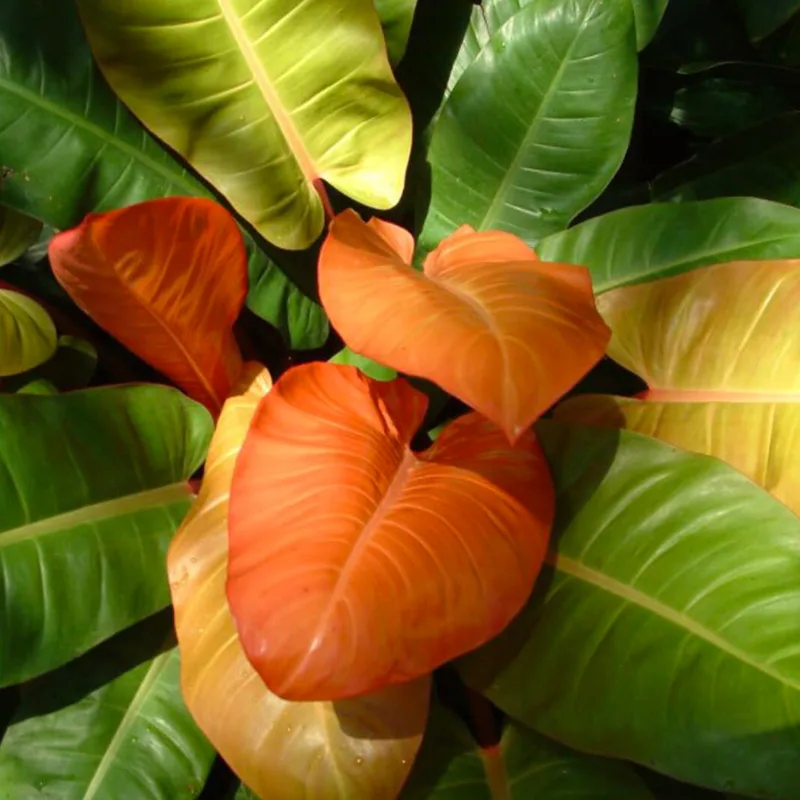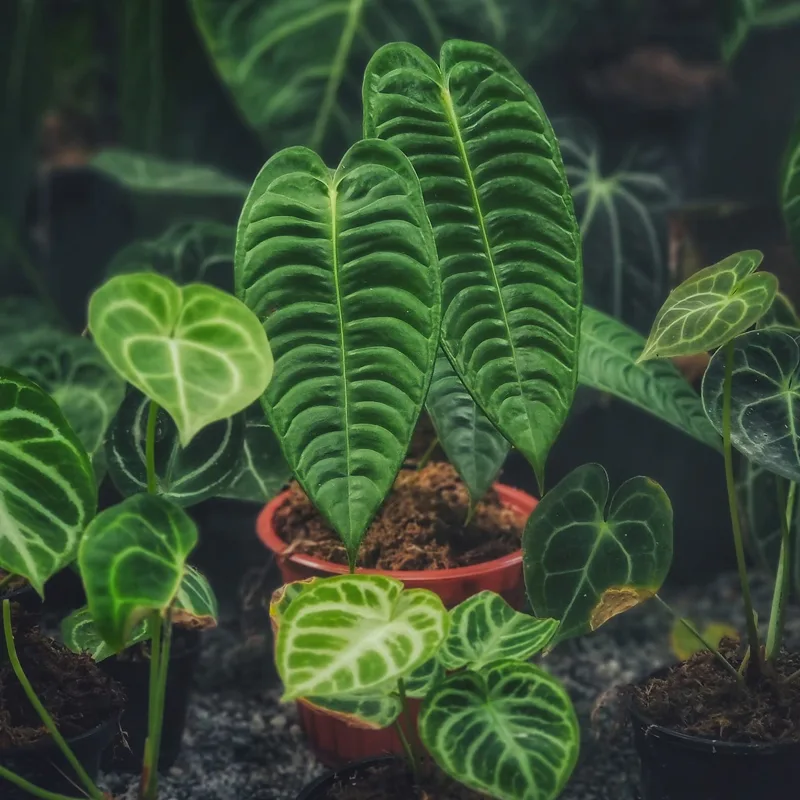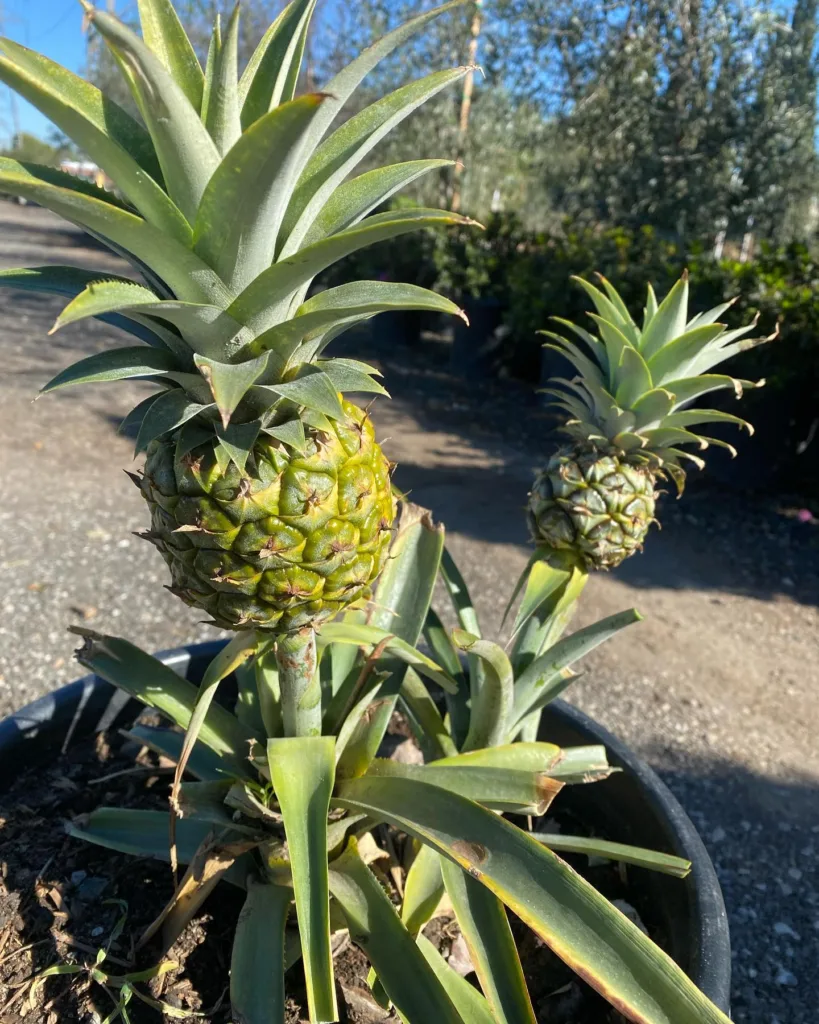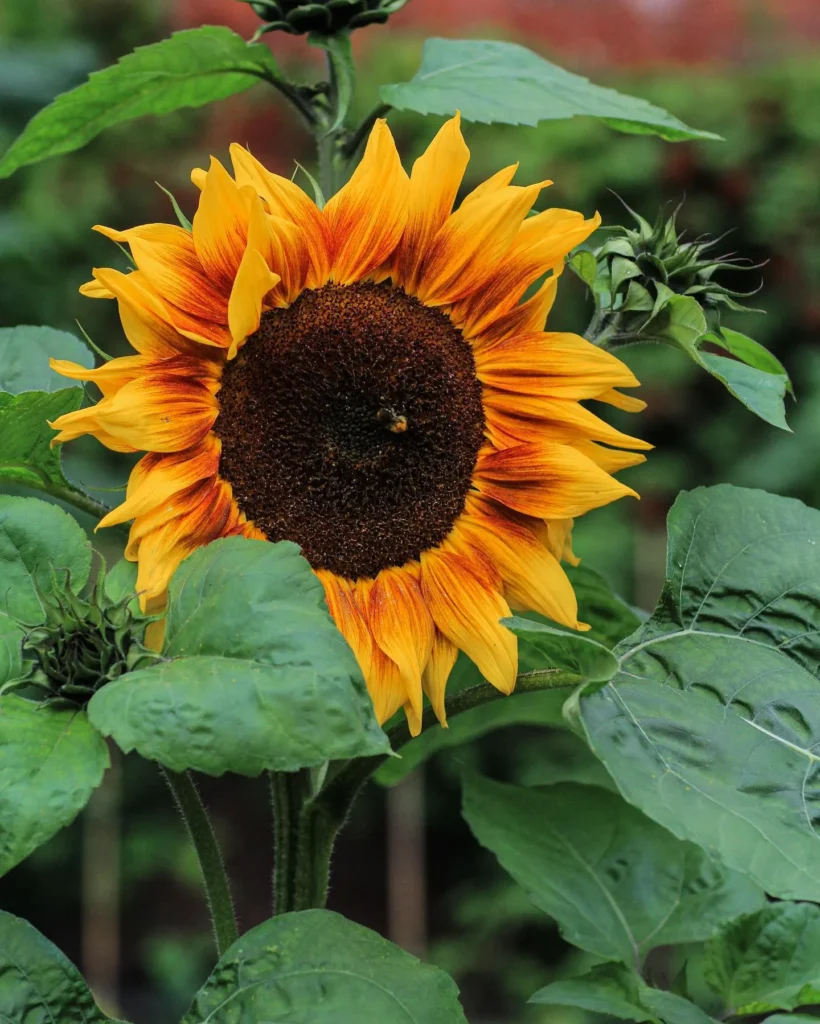
What does an orchid look like?
Orchids are some of the most fascinating flowers I’ve ever seen. The ones I have at home, phalaenopsis orchids, have these big, waxy blooms that come in all sorts of colors. Right now, mine are a vibrant purple with darker speckles, but I’ve seen them in white, pink, and even yellow before. The flowers are kind of like a butterfly with three big petals in the back and two smaller ones that curl forward. The coolest part, though, is the middle bit that looks like a fuzzy little platform. That’s where the new flowers grow from, and it’s always exciting to see a new bud peeking out!
Are orchids poisonous? Are orchids toxic to cats? Are orchids harmful to dogs?
I’ve always wondered about that since I both love orchids and have a super curious cat at home. Luckily, I looked it up, and orchids are actually not poisonous! Most common orchids are considered non-toxic to both cats and dogs. It’s a relief because my cat occasionally likes to nibble on things and I’d hate for her to get sick. Of course, even though they’re not poisonous, it’s not ideal for my plants if she decides to have a snack, so I try to keep them out of her reach.
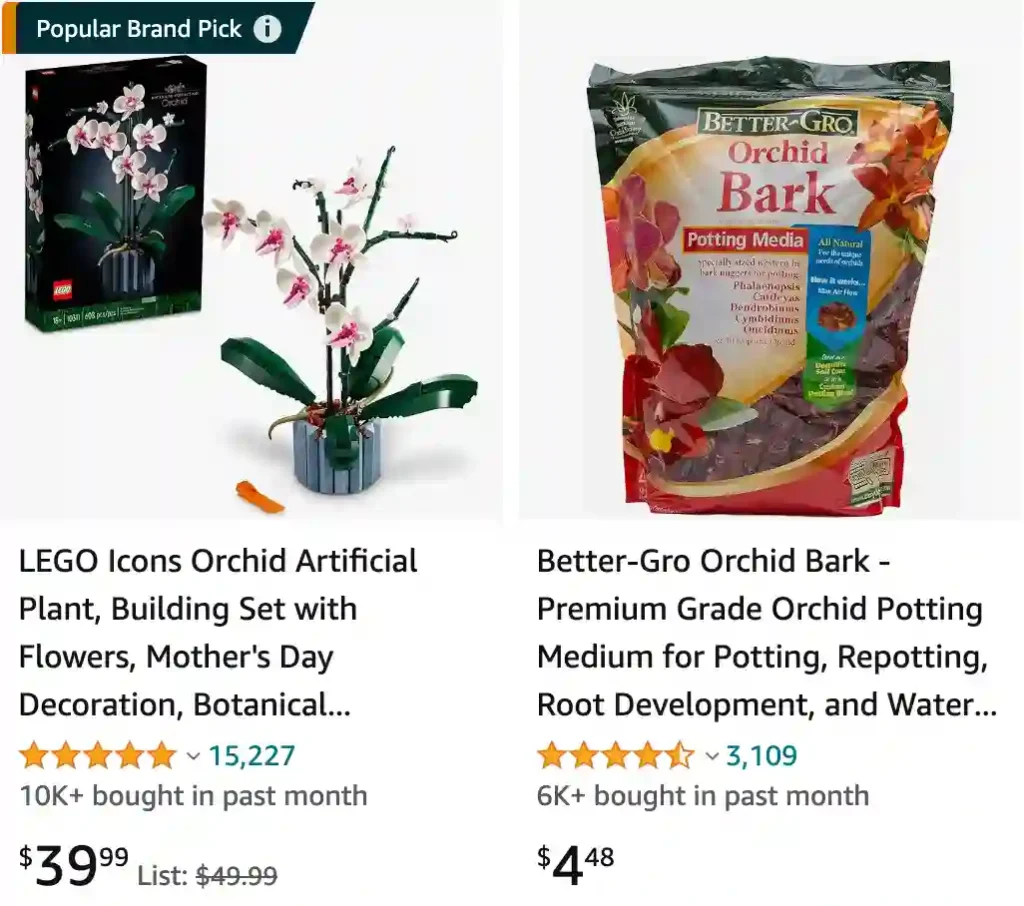
Are orchids edible?
Believe it or not, orchids are edible! I’ve never personally tried eating one, but I’ve been fascinated by the idea since I heard about it. Apparently, many varieties have a mild, floral flavor that would be lovely as a garnish in a dish or maybe even as part of a salad. Vanilla is a classic orchid product, but I’ve read even other types can be delicious. Now, I wouldn’t recommend just going out and snacking on whatever orchid you come across because identifying safe ones takes some knowledge, but it’s a cool reminder that there’s always an element of the unexpected in the natural world.
Why are my orchid leaves turning yellow?
Ugh, that yellowing on my orchid leaves is slowly turning into my nemesis! It’s hard to pinpoint the exact culprit sometimes. Overwatering is always a worry for me. I get so excited about giving my orchid a drink that sometimes I might go overboard. Then I start to question if it’s not getting enough light instead. Those windows in my living room are great, but maybe they’re not giving enough indirect sunlight. The whole thing can be a balancing act! I’m thinking about checking the roots next to see if they give any clues. Those green, plump roots are a good sign, but mushy brown ones mean trouble. Wish me luck in figuring this out!
What color is orchid?
The word “orchid” actually describes both a family of flowers and a specific color inspired by them. Orchid the color is a beautiful and vibrant shade that falls within the purple family. It can vary in tones, sometimes a bit more pink, and sometimes leaning bluer. Here’s a few examples:
- Classic Orchid: A vibrant, slightly pink-leaning purple.
- Radiant Orchid: A rich, deep purple with pink undertones.
- Mauve Orchid: A softer, muted purple with gray undertones.
How to repot an orchid with air roots?
I was actually just tackling a repotting project for my phalaenopsis orchid with all its crazy air roots! It can be a little intimidating, but here’s how I approach it:
- Prep Time: I like to soak my new potting mix (specially formulated for orchids) and the new pot in water overnight. That way, everything’s nice and hydrated when it’s time to repot.
- Gentle Removal: I carefully ease my orchid out of its old pot. Those air roots can be a bit clingy, so I go slow and try to avoid damaging them as much as possible.
- Root Check: Time to inspect those roots! Any that look yellowed or mushy need a trim. The healthy ones get to stay.
- New Home: I place my orchid in its new pot and start gently adding the potting mix around the base, being careful not to bury the air roots completely. They like to breathe a bit!
- Finishing Touches: I give it a good watering and then find the perfect sunny spot for my newly refreshed orchid. Here’s hoping it rewards me with some beautiful blooms!
Do orchids need sun?
Absolutely! Orchids, like most plants, need sunlight to thrive. I used to think they were all about the shade, but then my sun-loving orchid bloomed with these amazing vibrant flowers. It turns out that orchids have a sweet spot when it comes to light: bright, but indirect. Direct sunlight can actually scorch their delicate leaves, but they crave enough light to fuel growth and those beautiful blooms. I find my orchids do best near a bright window with some sheer curtains to diffuse the harshest rays.
Why is my orchid wilting?
It’s so frustrating when my beautiful orchid starts wilting! There could be a few culprits behind it. The first thing I always check is the watering situation. Have I been a little too enthusiastic and overwatered it? Soggy roots are a big no-no for orchids. On the other hand, if things have been on the dry side lately, dehydration could be the problem. Sometimes, it’s not about how much I water, but the quality of the water itself. If there’s a lot of mineral build-up, that can cause issues. Finally, my orchid might be trying to tell me it’s not happy about the temperature, humidity levels, or even the amount of light it’s getting. Wish I could just ask it what’s wrong!
Are orchids parasites?
It’s a common misconception that orchids are parasites, but actually, they aren’t! I used to think that because I’d see them growing on trees in pictures. But, it turns out, most orchids are epiphytes. It just means they have this super cool way of living on other plants for support, but they don’t take nutrients or water from the host. Orchids collect what they need from sunlight, air, and even rainwater! It’s a pretty amazing adaptation when you think about it.
Can orchids grow outside?
That depends entirely on where I live and the type of orchid! Some orchids are tropical beauties, so they wouldn’t last long in cooler climates. With those, bringing them indoors for the colder months is the best bet. However, other types of orchids are surprisingly tough and can tolerate cooler temperatures as long as it doesn’t get frosty. I like to check my local plant nurseries to see what varieties do well outdoors in my area. The key seems to be finding orchids that match my climate and giving them a sheltered spot outside with the right amount of light and moisture.
Do orchids like humidity?
Absolutely! Most orchids come from tropical climates and naturally love that humid environment. My orchids seem happiest when I aim for a humidity level of around 50-70%. During a dry spell, I’ve noticed the difference – their leaves can get a bit crispy and the blooms don’t last as long. To give them a little humidity boost, I sometimes mist them, set them on a tray of pebbles with water, or even run a humidifier nearby. You wouldn’t believe how much perkier they seem after that!
Are blue orchids real?
While orchids with true blue blooms do exist in nature, they’re certainly the exception, not the rule. Those stunning, vibrant blue orchids you see at the store are usually dyed to get that intense color. They’ll still bloom, and are incredibly eye-catching, but those beautiful blue flowers will fade over time. Next time, the orchid will likely bloom with its natural color, which is usually white. If you’re searching for blue orchids though, there are some less common, naturally-occurring varieties, like the Vanda coerulea, that boast beautiful blue hues all on their own!
Are orchids fragrant?
Yes, many orchids are fragrant! I love the subtle floral sweetness that fills the air around my blooming orchids. However, not every orchid is created equal when it comes to scent. Some varieties have absolutely breathtaking fragrances, while others might not have a noticeable scent at all. It’s always fun to take a quick sniff when I’m at the plant store – you never know what you might discover! It seems like the best time to catch the fragrance is often in the morning when the flowers are fresh.
How to attach an orchid to a tree?
Attaching an orchid to a tree is a fun way to give it a natural, tropical vibe! Here’s how I’d approach it:
- Choose Your Materials: Biodegradable materials are best. You can go with twine, strips of burlap, or even old pantyhose! Avoid anything like wire or velcro that could damage the orchid roots or the tree.
- Prep the Orchid: Gently remove it from its pot and get rid of old potting mix from the roots. If it helps you place it on the tree, you might loosely wrap the base in a bit of damp sphagnum moss.
- Find the Spot: Choose a tree with rough bark that’ll give the roots something to grip. A spot with some dappled shade is ideal for most orchids.
- Secure it: Place the orchid against the tree and gently tie it in place using your chosen material. You want it snug, but not so tight it crushes the roots.
- Let it Settle: Check on it periodically, especially after rain, to ensure it’s still secure. With a little time and nurturing, your orchid should start attaching itself naturally to the tree!
How to clean orchid leaves?
I like to give my orchid leaves a little spa day every now and then to keep them looking their best! Here’s my usual routine:
- Gentle Rinse: First, I give the leaves a good rinse with lukewarm water. This helps get rid of any dust or debris that’s gathered on them.
- Stubborn Spots: For those tougher water spots or sticky residue, I dilute a bit of lemon juice or mild dish soap in some water and gently wipe the leaves with a soft cloth. Bonus: the lemon juice gives them a lovely shine!
- Underside Check: Since I only clean the underside of the leaves when absolutely necessary, I check for any pests that might be hiding there. A quick wipe with diluted rubbing alcohol is helpful if I spot any unwanted guests.
- Finishing Touch: I always give them a final rinse with plain water to remove soap residue or anything else lingering. Then, I gently pat them dry with a soft cloth. My orchids seem to love the extra attention!
Where do orchids grow naturally?
Orchids are incredibly diverse, and they naturally grow across a wide range of habitats! The majority love those lush, tropical rainforests where you see them clinging to trees or growing among moss. But that’s not all! You can also find orchids in surprising places:
- Temperate Climates: Believe it or not, some types of orchids thrive in cooler climates and can even be found growing on the ground in forests.
- Semi-Deserts: There are orchids tough enough to handle the drier conditions of semi-deserts, proving their adaptability.
- Coastal Areas: Some orchids love the salty air and humidity found near the seashore.
- High Altitudes: Certain orchids flourish in the cooler temperatures and unique environments of mountainous regions, like the Andes.
It’s amazing to think about just how many different places orchids call home!
Are orchids air plants?
While they share some similarities, no, orchids are not air plants. Orchids are members of the Orchidaceae family, while air plants, or Tillandsia, are part of the Bromeliaceae family.
Here’s where the confusion might come from:
- Epiphytic Growth: Both orchids and air plants often grow as epiphytes, meaning they cling to other plants or structures for support but don’t take nutrients from their host.
- Aerial Roots: They both have specialized roots that can absorb moisture and nutrients from the air.
However, there are distinct differences in how air plants and orchids do this, along with other aspects of their appearance and care requirements.
How much do orchids cost?
Orchid prices can vary wildly! Here’s why:
- Type of Orchid: Common varieties, like Phalaenopsis orchids, are widely available and generally affordable. You can often find them at grocery stores or garden centers for around $15-$30. However, rarer or more exotic orchid species can sell for hundreds of dollars, making them a true collector’s item.
- Size and Maturity: Bigger, more mature orchid plants with lots of blooms will naturally cost more than smaller, younger ones.
- Source: Buying from a specialty orchid nursery might be a bit pricier than snagging an orchid on sale at a big box store. But with specialized nurseries, you usually get higher-quality plants and expert advice.
- Presentation: Orchids that come in fancy pots or with elaborate arrangements will cost more than a simple potted plant.
Overall, you can expect a basic, healthy orchid in full bloom to cost somewhere between $20-$50. If you’re searching for something more unusual or luxurious, the sky’s the limit!
Do orchids like coffee grounds?
While coffee grounds can be beneficial for some plants, the general consensus is that they’re not the best choice for orchids. Here’s why:
- Acidity: Coffee grounds are naturally acidic, and most orchids prefer a slightly acidic to neutral pH. Adding too many coffee grounds could throw off this balance and harm the roots.
- Decomposition: Coffee grounds break down quickly, and this process can create a lot of heat and change the composition of your orchid potting mix, leading to problems like root rot.
- Lack of Nutrients: Orchids need a specific balance of nutrients, and coffee grounds primarily provide nitrogen. Using them won’t provide the full range of nourishment your orchid needs.
It’s best to stick with orchid-specific fertilizers or compost that’s designed to break down slowly and provide the right mix of nutrients for them. However, if you’re composting them, those coffee grounds are still awesome for your other plants!
Is my orchid dead or dormant?
It can be hard to tell if my orchid is just taking a rest or if it’s reached the end of its life. Here’s what I look for:
- Leaves: If they’ve all yellowed and fallen off, it’s not a great sign. However, a few yellow leaves at the base of the plant could just be part of a natural shedding cycle while getting ready for dormancy.
- Roots: Healthy roots have a green or even silvery-white tone and feel plump and firm. Brown, mushy roots point to big trouble, possibly root rot.
- Crown: This is the area at the base of the plant where the leaves and roots meet. If it’s green and firm, that’s a good sign. But a mushy, brown crown often means the orchid is gone.
- Time of year: Many orchids, like Phalaenopsis, have a natural dormancy period, often during the winter months or after blooming. This is when they might look lifeless but are simply saving energy.
If you’re still unsure, don’t give up! Try giving your orchid the best possible care (perfect light, humidity, and only watering when necessary), and give it a few weeks to perk up. Sometimes even orchids that look pretty far gone can surprise you!
How often to put ice cubes in orchids?
The ice cube method for watering orchids is a bit controversial. While definitely popular, it might not be the most ideal way to water your orchid. Here’s why:
- Uneven watering: Ice cubes melt slowly, meaning some roots might be overwatered while others stay dry. Orchids prefer more consistent moisture.
- Too cold for the roots: Those icy cubes can deliver a chill to your orchid’s roots, which they don’t love since they’re tropical plants.
- Limited Control: The “three ice cubes a week” rule doesn’t account for factors like orchid type, environment, or pot size.
A better approach:
- Soaking: Many orchid experts recommend soaking the entire pot in lukewarm water for about 15 minutes once a week. Allow it to drain completely before putting it back.
- Feeling the potting mix: Stick your finger in the potting mix. If it feels dry an inch or two down, it’s time to water.
You can still try the ice cube method, just be extra cautious! If you notice any yellowing leaves, mushy roots, or an unhappy-looking orchid, it might be time to switch your watering technique.
How to grow orchids without soil?
Orchids can absolutely thrive without soil! Here are some of the most popular ways to grow them:
- Mounted Orchids: This involves attaching an orchid directly to a piece of wood, cork, or even tree fern using a natural material like twine or burlap. Mounted orchids get maximum air circulation, mimicking their natural growth as epiphytes on trees.
- Semi-Hydroponics (Leca): These are clay pellets that hold moisture while allowing for good air circulation. A clear container lets you see the roots and water levels so you know when to refill.
- Basket Growing: Orchids do well in slatted baskets filled with coarse orchid bark, allowing lots of airflow to the roots. Sphagnum moss can be added for moisture retention.
Tips for Soil-free Orchids:
- Choosing the Right Orchids: Phalaenopsis orchids are a great starting point, but many other orchid varieties can adapt to soilless growing.
- Fertilizing: Orchids grown without soil require frequent, diluted fertilizer since their media doesn’t provide nutrients.
- Increased Watering: Soil-free methods will have you watering more often than the usual “once-a-week” rule. Observe your plants and water when they start to dry out.
Growing orchids without soil is a fun way to appreciate their unique growth habit and even gives you a clear view of those fascinating roots!
What is the best fertilizer for orchids?
There’s no single “best” fertilizer for orchids, but here’s what I look for and some tips to help you choose:
- Balanced is Key: I usually go with a balanced orchid fertilizer, meaning it has equal parts nitrogen (N), phosphorus (P), and potassium (K). A ratio like 20-20-20 is pretty common. You can even find ones specifically formulated for orchids.
- Bloom Booster: When I want to encourage new flowers, I might try a fertilizer with a higher ratio of phosphorus, such as 10-30-20. However, use this sparingly!
- Dilution: Most orchid fertilizers require dilution. “Weakly, weekly” is a good rule of thumb – it means applying a diluted fertilizer solution every week. Always follow the instructions on the label and err on the side of less concentrated.
- Type of Orchid: There’s often some variation in what types of fertilizer different orchids prefer. If you have a specific orchid in mind, do a bit of research to find out its specific needs.
Here are some things to avoid:
- High Urea: Many standard fertilizers contain lots of urea, which can be harmful to orchids long-term.
- All-Purpose Might Be Too Harsh: While sometimes it can work, an all-purpose fertilizer might be too strong for orchids. If you do choose one, dilute it even further than the instructions suggest.
Finding the right fertilizer for your orchids is often a matter of experimentation and observation!
How cold can orchids tolerate?
How cold orchids can tolerate depends entirely on the type of orchid. Here’s the breakdown:
- Tropical Orchids: Most orchids we buy—Phalaenopsis, Cattleyas, Dendrobiums—love their cozy tropical heritage. They prefer temps between 60-80°F (15-27°C) and are definitely not frost tolerant. They don’t like it when things dip below 50°F (10°C). Bringing these guys indoors for winter is a must!
- Cool-tolerant Orchids: Some orchids, like Cymbidiums and certain types of Paphiopedilums, enjoy cooler temperatures. They can even handle brief chills down to the 40s°F (around 5°C), but still no frost!
- Cold Hardy Orchids: Believe it or not, some orchids are winter warriors! Terrestrial orchids (those that grow on the ground rather than as epiphytes) native to temperate climates can survive frost and even snow.
Here are some tips:
- Know Your Orchid: Find out the specific type of orchid you have to determine its ideal temperature range. A quick search online or a trip to a local nursery can help.
- Watch for Signs: Chilling injuries show as mushy, blackened leaves or flowers. Bring your orchid indoors if you see these signs.
- Gradual Changes: Don’t shock your orchid with sudden temperature swings; gradual adjustments are best.
It’s always a good idea to play it safe and research your specific orchid’s preferences!
Should i repot my orchid after buying?
It’s not always necessary to repot your orchid immediately after buying it, but there are a few reasons why you might want to:
Reasons to repot:
- Potting Medium: If it’s potted in sphagnum moss, it retains moisture for a long time and increases the risk of root rot. Repotting into a well-draining orchid bark mix is often a good idea.
- Crowded Roots: If the roots are poking out of the pot or circling tightly inside, the orchid needs a bigger home to keep growing.
- Poor Quality Medium: If the potting mix seems too dense, old, or decomposed, repotting will ensure the roots have a fresh, airy environment.
Reasons to wait:
- While in Bloom: Repotting can stress a flowering orchid and cause buds to drop. It’s best to wait until it finishes blooming to minimize shock.
- Healthy Plant: If the orchid looks happy, roots seem fine, and the potting mix seems fresh, you can wait a bit!
Here’s a middle ground:
- Inspect Carefully: Gently take it out of the pot to check the roots and potting mix. If things are healthy, you can place it back in and repot later.
No matter what you choose, always use a potting mix specifically designed for orchids!
Can you propagate an orchid from a leaf?
Sadly, you can’t propagate most orchids from a leaf like you can with some succulents. However, there are a few exceptions and some fun ways to propagate them:
Not From a Leaf:
- Keikis: Some orchids, like Phalaenopsis, produce baby plants called keikis along the flower spike. When these keikis have roots of their own, they can be separated and potted up as new plants.
- Division: Many orchids with multiple growth points can be divided into separate plants. This is a great way to get more orchids when one outgrows its pot.
Special Leaf Propagation:
- Restrepia Orchids: A specific genus called Restrepia can grow new plants from leaf cuttings when placed on damp moss under the right conditions.
While you can’t propagate your average orchid from a leaf, there are still exciting ways to get more of these beautiful plants! If you’re up for a challenge, you could even try experimenting with tissue culture techniques, where tiny portions of orchid tissue are used to generate new plants in a lab-like setting.
